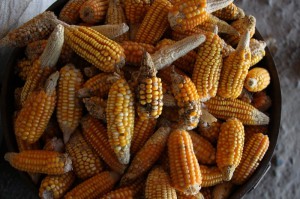File under strange bedfellows
The 45 cent tax credit (the Volumetric Ethanol Excise Tax Credit or VEETC) subsidizes the use of ethanol as an additive to gasoline. It’s not only wasteful (and hence potentially attractive to fiscal conservatives), but it is also contributing to higher food prices that endanger the ability of millions of people around the world to get enough food to eat.
The Senate is expected to vote on the elimination of ethanol subsidies in the coming days. One of the bill’s co-sponsors, Sen. Tom Coburn, often holds different views on many of the issues that Oxfam cares about, but in this case we are squarely on the same page. (Sen. Ben Cardin is the other co-sponsor). The 45 cent tax credit (the Volumetric Ethanol Excise Tax Credit or VEETC) subsidizes the use of ethanol as an additive to gasoline. It’s not only wasteful (and hence potentially attractive to fiscal conservatives), but it is also contributing to higher food prices that endanger the ability of millions of people around the world to get enough food to eat.

Driven by poor policy decisions in the US, artificial demand for corn-based ethanol has created competition between food and fuel. US corn stocks are at a four year low, and the price of corn is up to the level reached in 2008 during the height of the food price crisis that pushed more than 150 million into hunger. While the FAO reported today that their food price index showed a slight decline from last month, they note that their Cereal Price Index remains 60% above where it was in March 2010. The FAO also points to increased volatility in cereal markets, bad news for poor consumers who rely on basic cereals as the source of most (or all) of their calories.
An excellent graph showing the increasing amounts of grain increasingly being used for biofuels accompanies a New York Times article here.

Yes, a need exists to find alternative sources of energy to dwindling oil supplies, but this search should not come at the expense of poor people who already can’t afford to buy food and who are seeing the price of corn rise, in part because ethanol producers are diverting corn from feed and feed markets. Even after years of costly incentives for biofuels, our dependence on dangerous fossil fuels has only increased. And it’s easy to see why, even if the entire US corn harvest was diverted to ethanol, it would only be able to replace about one gallon of every six sold in the country.
In an age when volatile food prices are contributing to increased poverty, instability, violence, and spikes in hunger that create new humanitarian and national security challenges every day, we can no longer afford to spend billions of tax dollars to turn our food supply into fuel. If Congress is looking for a quick place to save some much needed tax dollars, they should pass the Coburn and Cardin amendment.